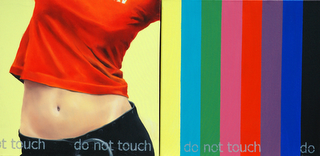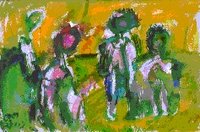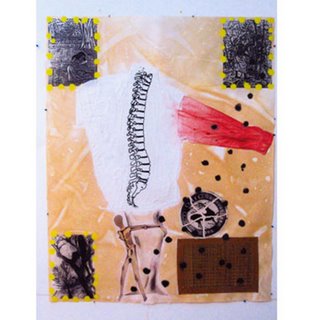
(By Nalini S Malaviya)
Sakti Burman is celebrating his 75th birthday in style. An exhibition of limited edition prints titled The Complete Collection of select paintings produced by the eminent artist in the last two decades is being showcased. The serigraphs have been produced in collaboration with Lavesh Jagasia from The Serigraph Studio.
The veteran artist born in Bidyakut, which is now a part of Bangladesh has been living in France since the mid 1950s, but now spends a few months every year in New Delhi. He recalls that the life of an artist was not so easy in those days and when he went to Paris in 1956 to study at the Ecole Nationale Superieure des Beaux-Arts, he did not know anyone and his paintings helped him to build bridges with others in a foreign land. He says, “I too veered towards the great masters in the early years and fell under the influence of Bonnard, Matisse, Chagall and of course Picasso. Just to stand before their canvas was to experience the unreal. It was so far removed from my life in Bidyakut.”
Looking at his paintings his Indian roots are easily visible – the rich earthy palette, a profusion of mythological figures and an air of romanticism that define his canvas. However, when one looks closely one finds figures from Greek mythology and other western influences. His paintings are a pictorial narrative, a joyous celebration and a confluence of iconic characters from across the world that form the tableaux as they narrate the tale. He explains, “All my excited enjoyment of art in India and in the West that lay stored in my memory and in my unconscious, all the myths and fairy tales, legends and lore I had heard or read, my love for music and the songs of Tagore or the poetry of Baudelaire – all went into the making of my paintings to evoke a world of unreality, but one very much real in my imaginative life and enlivened in every part with hope, joy dream and fantasy.”
Why serigraphs? As Lavesh, an avid art collector turned publisher explains, the primary reason for bringing out a series of limited edition prints was to make art accessible to a larger number of connoisseurs. With prices of paintings becoming so high, the only way to reach out to people is by offering them multiples that have been created with an emphasis on quality. He adds, “the ambitious project has taken almost 5 to 6 years to complete and in a sense it is a virtual retrospective with seminal works from the artist’s body of work coming together in a single portfolio.” The exhibition is being held in several cities such as Mumbai, Chennai, New Delhi and Kolkata, as well.
(The exhibition continues till March 10 at Gallery Sumukha, Bengaluru)
(Published in Bangalore Mirror)





